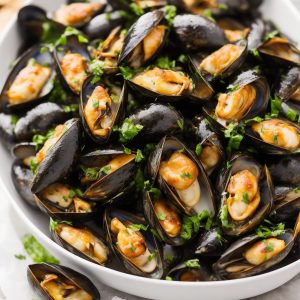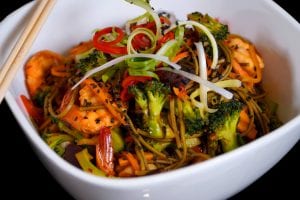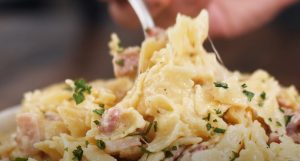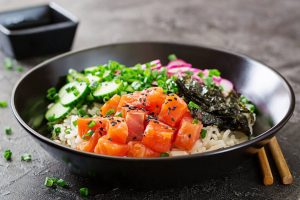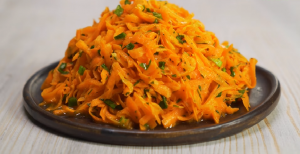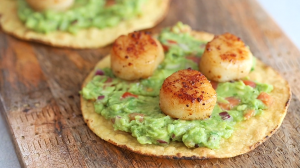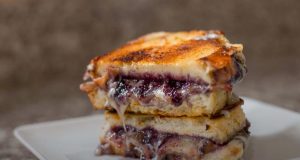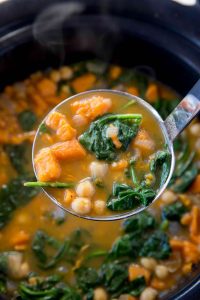Explore the world of Thai cuisine with this authentic Thai Drunken Noodles (Pad Kee Mao) recipe. It's a perfect blend of sweet, spicy, and savory flavors wrapped in comfortable noodles. This dish is known for its rich, bold flavors and a hint of spiciness. With a few special ingredients, you can bring the tastes of the Thai streets right to your kitchen.
The key to achieving the distinctive flavor of Thai Drunken Noodles are the Thai Basil leaves and the Sweet Dark Soy Sauce. Thai Basil is different from the commonly used Sweet Basil; it has a more pronounced anise flavor. Check the Asian section in your supermarket, or, it's always available in Asian groceries. The Sweet Dark Soy Sauce is thicker and less salty than regular soy sauce but has a sweet taste. It's paramount to this dish, so don't skip it!
Essential Ingredients for Thai Drunken Noodles (Pad Kee Mao)
Rice noodles: These are the base of the dish, they soak up all the flavors and give a wonderful texture.
Chicken breasts: A lean source of protein. It is cooked and mixed with veggies and noodles.
Scallions: These add a slight crunch and a mild onion flavor to the dish.
Broccoli florets: They provide a vibrant color and texture while also adding nutritional value.
Red bell pepper: This adds a sweet flavor and a crunchy texture.
Garlic: It provides an aromatic presence that is fundamental in any stir-fry dish.
Thai basil leaves: These impart a distinct anise-clove flavor which is indispensable in Thai cuisine.
Soy sauce: This adds a salty and tangy flavor to the dish.
Oyster sauce: It is a thick, dark brown liquid made from oysters. It adds a savory depth to the dish.
Fish sauce: A staple in Thai cuisine, it provides a unique umami flavor.
Sweet dark soy sauce: This gives the dish its characteristic sweetness and adds color.
Chili garlic sauce: It adds a punch of heat and depth to the dish.
One reader, Josefina Sharma says:





This Thai drunken noodles recipe is a game-changer! The flavors are incredible, and the dish is so easy to make. The combination of fresh ingredients and the perfect balance of sauces makes it an absolute winner. I highly recommend trying it out for an authentic taste of Thai cuisine.
Essential Techniques for Making Thai Drunken Noodles
How to cook the noodles: Cook the noodles according to the package instructions until they are al dente. Drain and rinse with cool water until the noodles are no longer hot, and set aside until ready to use.
How to sauté the chicken: Heat oil in a large sauté pan or wok over medium-high heat. Season the chicken with a generous pinch of salt and pepper. Sauté the chicken for 3 to 4 minutes, stirring only occasionally, until it is cooked through. Transfer the cooked chicken to a separate (clean) plate, and return the pan to the heat.
How to sauté the vegetables: Add the remaining oil to the pan. Add the white parts of the green onions and the bell pepper to the pan and sauté for 2 minutes, stirring occasionally. Add the broccoli and garlic and sauté for 2 more minutes, stirring occasionally, until the veggies reach the desired level of tenderness.
How To Make Thai Drunken Noodles (Pad Kee Mao)
Serves:
Ingredients
For Stir-Fry:
- 8ozuncooked rice noodles
- 2tbspoil,divided
- 1lbchicken breasts,boneless skinless, cut into bite-sized pieces
- 3scallions,chopped with white and dark green parts divided
- 2cupsbroccoli florets,or other veggies
- 1red bell pepper,cored and diced
- 4clovesgarlic,minced
- 1½cupsfresh Thai basil leaves,tightly-packed
For Optional Toppings:
- fresh lime wedges
- Thai bird chiles,sliced
- chopped peanuts
- fried garlic
For Stir-Fry Sauce:
- 3tbsplow-sodium soy sauce
- 2tbspoyster sauce
- 2tbspfish sauce
- 1tbspsweet dark soy sauce
- 1tbspchili garlic sauce
Instructions
-
Whisk the sauce ingredients together in a small bowl or measuring cup until combined.
-
Cook the noodles according to package instructions until they are al dente. Drain and rinse with cool water until the noodles are no longer hot, and set aside until ready to use.
-
Heat 1 tablespoon oil in a large sauté pan or wok over medium-high heat. Season the chicken with a generous pinch of salt and pepper.
-
Add the chicken to the oil and sauté for 3 to 4 minutes, stirring only occasionally, until it is cooked through. Transfer the cooked chicken to a separate (clean) plate, and return the pan to the heat.
-
Add the remaining 1 tablespoon oil to the pan. Add the white parts of the green onions and the bell pepper to the pan and sauté for 2 minutes, stirring occasionally.
-
Add the broccoli and garlic and sauté for 2 more minutes, stirring occasionally, until the veggies reach desired level of tenderness.
-
Immediately add the cooked noodles, sauce, chicken, Thai basil, and the green parts of the scallions to the pan. Give everything a good toss for 1 to 2 minutes until all ingredients are evenly coated with the sauce.
-
Remove pan from the heat and serve immediately, garnished with any desired toppings.
Nutrition
- Calories: 347.09kcal
- Fat: 12.18g
- Saturated Fat: 2.45g
- Trans Fat: 0.10g
- Monounsaturated Fat: 5.93g
- Polyunsaturated Fat: 2.98g
- Carbohydrates: 37.63g
- Fiber: 1.81g
- Sugar: 1.85g
- Protein: 20.92g
- Cholesterol: 48.38mg
- Sodium: 1163.44mg
- Calcium: 62.36mg
- Potassium: 436.84mg
- Iron: 1.79mg
- Vitamin A: 107.78µg
- Vitamin C: 62.60mg
Crucial Technique Tip for Perfect Pad Kee Mao
When preparing your Thai drunken noodles, it's important to not overcook your rice noodles. They should be cooked until they are al dente, which means they are still firm when bitten. This is crucial because the noodles will continue to cook when you add them to the pan with the other ingredients. If the noodles are overcooked, they can become mushy and lose their texture. Additionally, rinsing the noodles with cool water after cooking stops the cooking process and helps to remove excess starch, which can make your dish overly sticky.
Time-Saving Tips for Making Pad Kee Mao
Prep ahead: Chop vegetables, measure out ingredients, and prepare the sauce in advance to streamline the cooking process.
High heat: Use a high heat setting to quickly cook the ingredients, ensuring that they retain their vibrant colors and crisp textures.
One-pan wonder: Consider using a large skillet or wok to cook the entire dish in one pan, minimizing cleanup and saving time.
Multi-task: While the noodles are cooking, prep the vegetables or cook the chicken to make the most of your time in the kitchen.
Fresh shortcuts: Opt for pre-cut vegetables or pre-cooked chicken to cut down on prep time without sacrificing flavor.
Efficient assembly: Arrange all ingredients and utensils in an organized manner before starting to cook for a more efficient cooking process.
Quick cleanup: Clean as you go to avoid a cluttered workspace, making the post-cooking cleanup much faster and easier.
Substitute Ingredients For Thai Drunken Noodles (Pad Kee Mao) Recipe
Rice noodles - Substitute with soba noodles: Soba noodles have a similar texture and can be used as a substitute for rice noodles in this recipe. They also add a nutty flavor that complements the dish well.
Thai basil leaves - Substitute with Italian basil leaves: Italian basil leaves can be used as a substitute for Thai basil leaves. While the flavor is slightly different, it still provides a fresh and aromatic element to the dish.
Oyster sauce - Substitute with hoisin sauce: Hoisin sauce can be used as a substitute for oyster sauce, providing a sweet and savory flavor to the dish.
Sweet dark soy sauce - Substitute with regular soy sauce mixed with brown sugar: Mixing regular soy sauce with brown sugar can replicate the sweet and salty flavor of sweet dark soy sauce in the recipe.
Thai bird chiles - Substitute with serrano chiles: Serrano chiles can be used as a substitute for Thai bird chiles, providing a similar level of heat and flavor to the dish.
Broccoli florets - Substitute with Chinese broccoli (gai lan) or broccolini: Chinese broccoli or broccolini can be used as a substitute for regular broccoli, providing a slightly different flavor and texture to the dish.
Red bell pepper - Substitute with yellow bell pepper: Yellow bell pepper can be used as a substitute for red bell pepper, providing a similar crunch and sweetness to the dish.
Chili garlic sauce - Substitute with sriracha: Sriracha can be used as a substitute for chili garlic sauce, providing a spicy and garlicky flavor to the dish.
How to Beautifully Present Thai Drunken Noodles
Elevate the plating: When presenting the Thai drunken noodles, focus on creating an elegant and visually appealing arrangement on the plate. Consider using fresh Thai basil leaves and chopped peanuts as garnishes to add color and texture to the dish.
Incorporate height and depth: Utilize the concept of height and depth in the presentation by carefully stacking the noodles and arranging the chicken and vegetables in a visually striking manner. This will add dimension and visual interest to the dish.
Emphasize balance and symmetry: Pay attention to the balance and symmetry of the components on the plate. Arrange the noodles, chicken, and vegetables in a harmonious manner, ensuring that each element complements the others.
Highlight the vibrant colors: Showcase the vibrant colors of the dish by arranging the red bell peppers, green broccoli, and fresh Thai basil in a way that accentuates the visual appeal of the noodles. The colorful presentation will captivate the judges' attention.
Attention to detail: Pay close attention to the finer details of the presentation, such as ensuring that the noodles are neatly arranged and the garnishes are delicately placed. The meticulous attention to detail will demonstrate precision and care in the plating.
Create an inviting atmosphere: Consider the overall ambiance of the presentation area. Ensure that the lighting and background enhance the visual appeal of the dish, creating an inviting and captivating setting for the judges to experience the Thai drunken noodles.
Essential Tools for Making Pad Kee Mao
Cutting board: A flat, sturdy surface used for cutting, chopping, and preparing ingredients.
Chef's knife: A versatile, all-purpose knife used for slicing, dicing, and chopping various ingredients.
Wok: A versatile round-bottomed cooking vessel used for stir-frying, steaming, pan-frying, and more in Asian cooking.
Sauté pan: A wide, flat-bottomed pan with relatively high sides, used for sautéing, searing, and frying ingredients.
Tongs: Essential for flipping, turning, and serving food while cooking.
Measuring cups and spoons: Used for accurately measuring ingredients for the recipe.
Whisk: A kitchen tool used for blending, whipping, and beating ingredients together.
Large pot: Used for boiling water and cooking the rice noodles.
Spatula: Essential for stirring, flipping, and serving ingredients during cooking.
Grater: Used for grating fresh ingredients such as ginger or garlic.
Small bowl or measuring cup: Used for mixing and combining the stir-fry sauce ingredients.
Colander: Used for draining and rinsing the cooked rice noodles.
Plates and bowls: Used for serving the finished dish.
Storing and Freezing Thai Drunken Noodles
- To store leftover thai drunken noodles, allow them to cool completely to room temperature before transferring to an airtight container. Refrigerate for up to 3-4 days.
- When reheating, add a splash of water or chicken broth to the noodles to help rehydrate them and prevent them from drying out. Reheat in the microwave or on the stovetop until heated through.
- For longer storage, you can freeze the noodles for up to 2-3 months. To freeze, transfer the cooled noodles to a freezer-safe container or resealable plastic bag, removing as much air as possible before sealing.
- To thaw frozen pad kee mao, place the container in the refrigerator overnight or for several hours until fully thawed. Reheat as mentioned above, adding a bit of liquid to help restore the noodles' texture.
- If you plan on freezing the dish, it's best to undercook the vegetables slightly to prevent them from becoming too soft and mushy when reheated.
- Consider storing the sauce separately from the noodles and other ingredients to maintain the best texture when reheating. This will also allow you to adjust the sauce quantity according to your preference.
How To Reheat Leftover Thai Drunken Noodles
Reheat the leftover thai drunken noodles in a large skillet or wok over medium-high heat. Add a splash of water or chicken broth to the pan to help loosen up the noodles and prevent them from sticking together. Stir-fry the noodles for 3-4 minutes, or until they are heated through and the liquid has evaporated. This method will help restore the texture and flavor of the noodles while preventing them from becoming too dry or overcooked.
If you prefer a more moist and saucy texture, reheat the pad kee mao in a microwave-safe container. Add a tablespoon or two of water or chicken broth to the container, then cover it with a damp paper towel. Microwave the noodles in 30-second intervals, stirring between each interval, until they are heated through and have reached your desired consistency. This method is quick and easy, and the added moisture will help prevent the noodles from drying out.
For a crispy texture, preheat your oven to 350°F (175°C). Spread the leftover thai drunken noodles in a single layer on a baking sheet lined with parchment paper. Drizzle a small amount of oil over the noodles and toss to coat evenly. Bake the noodles for 10-15 minutes, or until they are heated through and slightly crispy around the edges. This method works well if you enjoy a more textured and crispy noodle dish.
If you have a steamer basket, you can also reheat the pad kee mao using steam. Bring a pot of water to a boil, then place the leftover noodles in a heatproof dish that fits inside your steamer basket. Cover the steamer basket and steam the noodles for 5-7 minutes, or until they are heated through. This method helps maintain the original texture of the noodles without adding any extra oil or liquid.
Interesting Fact About Pad Kee Mao
The Thai drunken noodles recipe, also known as pad kee mao, is a popular dish in Thailand. It is traditionally made with wide rice noodles, which are stir-fried with a flavorful sauce and a variety of vegetables and proteins. The dish gets its name from the fact that it is often enjoyed late at night by people who have been out drinking. The combination of bold flavors and spicy heat makes it a perfect comfort food for those seeking a late-night meal. This dish is a great way to experience the vibrant and bold flavors of Thai cuisine.
Is Making Thai Drunken Noodles at Home Cost-Effective?
The cost-effectiveness of this Thai drunken noodles (pad kee mao) recipe is quite favorable for a household. The ingredients, such as rice noodles, chicken breasts, vegetables, and sauces, are generally affordable and readily available. The total cost for a household of 4 people is approximately $20-25, making it a budget-friendly option. The versatility of the dish and the use of common pantry staples contribute to its cost-effectiveness. Overall Verdict: 9/10
Is Pad Kee Mao Healthy or Unhealthy?
The Thai drunken noodles (pad kee mao) recipe is a delicious and flavorful dish, but it may not be the healthiest option due to several factors:
- The recipe uses a significant amount of oil for stir-frying, which can increase the calorie and fat content of the dish.
- The sauce contains high-sodium ingredients like soy sauce, oyster sauce, and fish sauce, which can contribute to excessive sodium intake.
- The dish lacks a substantial amount of vegetables, limiting the potential for added nutrients and fiber.
However, the recipe does include some healthy ingredients, such as chicken breast (a lean protein source), broccoli, and bell peppers, which provide essential vitamins and minerals.
To make this recipe healthier, consider the following suggestions:
- Reduce the amount of oil used in stir-frying, or opt for a healthier cooking method like steaming or boiling the vegetables before adding them to the stir-fry.
- Use low-sodium versions of soy sauce, oyster sauce, and fish sauce to decrease the overall sodium content of the dish.
- Increase the variety and quantity of vegetables in the recipe, such as adding carrots, mushrooms, or bok choy, to boost the nutrient and fiber content.
- Use whole-grain rice noodles instead of regular rice noodles to increase the fiber content and provide a slower release of energy.
- Serve the dish with a side of fresh, raw vegetables like cucumber or lettuce to add extra crunch and nutrients.
- Experiment with alternative lean protein sources, such as tofu or shrimp, to vary the nutritional profile of the dish.
Editor's Opinion on This Thai Drunken Noodles Recipe
This Thai drunken noodles recipe is a delightful blend of flavors and textures. The combination of tender chicken, vibrant vegetables, and aromatic Thai basil creates a harmonious dish. The sauce strikes a perfect balance of savory, sweet, and spicy notes, elevating the overall taste. The optional toppings add a delightful crunch and extra layers of flavor. The recipe's clear instructions make it accessible for home cooks, and the result is a restaurant-quality dish that is sure to impress.
Enhance Your Thai Drunken Noodles (Pad Kee Mao) Recipe with These Unique Side Dishes:
Similar Recipes to Thai Drunken Noodles
Appetizers and Desserts to Serve With Thai Drunken Noodles
Why trust this Thai Drunken Noodles (Pad Kee Mao) Recipe:
This recipe for Thai Drunken Noodles is a delicious and authentic dish that captures the bold and vibrant flavors of Thai cuisine. The combination of chicken, fresh Thai basil, and a well-balanced stir-fry sauce creates a harmonious blend of savory and aromatic elements. The use of rice noodles ensures a satisfying texture, while the inclusion of broccoli and red bell pepper adds a delightful crunch and sweetness. With the option to customize with lime wedges, Thai bird chiles, chopped peanuts, and fried garlic, this recipe offers a truly immersive culinary experience. Trust in the authenticity and deliciousness of this Thai Drunken Noodles recipe.
Was this page helpful?
Have your own special recipe to share? Submit Your Recipe Today!




